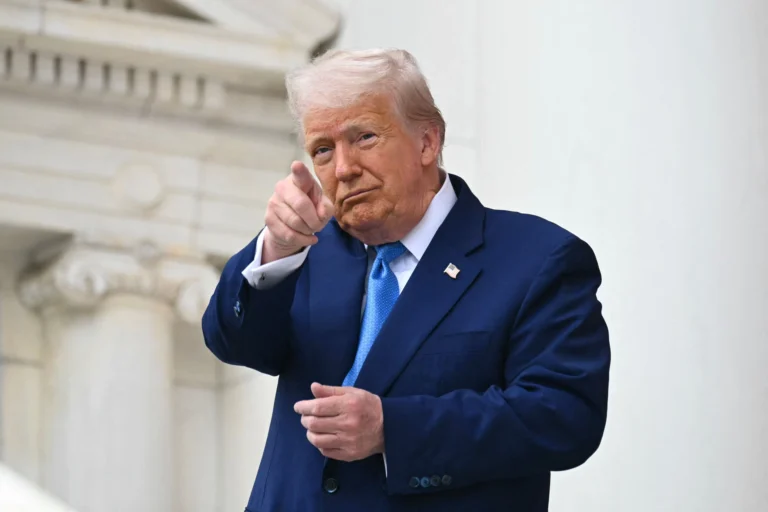[SINGAPORE] When news broke early last Thursday (May 29) morning that a US federal court had struck down most of President Donald Trump’s sweeping tariffs, I was almost done selling a portfolio of US stocks that I had held since the global financial crisis.
With a tinge of seller’s remorse, I watched markets in Asia react positively and waited for what I assumed would be a strong rally in the S&P 500 when the US market opened.
The rally never really came. The S&P 500 closed on Thursday at 5,912.17, just 0.4 per cent higher than the previous day’s close of 5,888.55. On Friday, the benchmark US stock index closed less than 0.01 per cent lower at 5,911.69.
One could also argue that the ruling by the US court that most of Trump’s tariffs are illegal, rather than being positive for the corporate sector and investors, actually creates more uncertainty for them.

Tuesday, 12 pm
Property Insights
Get an exclusive analysis of real estate and property news in Singapore and beyond.
The Trump administration has said it will fight the ruling, and indicated that it may ultimately have to take the matter to the US Supreme Court. In the meantime, a federal appeals court has allowed Trump’s tariffs to remain in place.
This puts America’s trading partners in a tricky situation. Should they quickly offer concessions to get the US to lower its “reciprocal” tariffs? Or should they slow-walk the negotiations in the hope that the courts eventually force a full rollback of the tariffs?
For companies, this uncertainty could complicate long-term decision making. Should companies exporting to the US market take immediate steps to cope with the tariffs, perhaps by downsizing or relocating their business operations? Should US companies turn to alternative, but less efficient, global supply chains?
Or should they all just wait for their respective governments to sort everything out?
The way I see it, protracted uncertainty surrounding Trump’s tariffs may end up causing just as much harm to companies than the tariffs themselves, by paralysing spending and investing decisions.
Taco trade crowded
While I firmly believe in long-term investing, unloading most of the US stocks I owned over the past couple of weeks was a no-brainer.
In the first place, the S&P 500 had rebounded strongly from its post-“Liberation Day” lows, thanks in large part to Trump pausing his tariffs only hours after they had gone into effect, plainly demonstrating that he did not have the stomach for the economic and financial market fallout that would have followed.
The benchmark US stock index is now more than 4.2 per cent above its Apr 2 close, and only 3.8 per cent below its 52-week high of 6,147.43.
There could well be more volatility ahead as Trump continues his tariff antics. In the past week alone, he has walked back his threat to slap a 50 per cent tariff on the European Union; proposed to double tariffs on steel and aluminium to 50 per cent; and grumbled that China is violating its trade truce with the US.
Given the extent of S&P 500’s recovery, however, the notion that Trump’s tariffs will ultimately be watered down may not drive the benchmark index much higher. The Taco acronym might only just have gone viral, but the Taco trade is already looking very crowded.
Another factor that could cap further gains in the S&P 500 is growing concern about the rising level of US government debt. Trump is pushing a tax and spending Bill through the US Congress that will add more than US$3 trillion to the federal government’s debt levels over 10 years.
This could exacerbate upward pressure on US Treasury bond yields, especially after Moody’s cut its credit rating on the US last month, from “Aaa” to “Aa1”.
Then, there is the risk of the Trump administration hitting global investors with higher taxes on their US assets – either to gain leverage in trade negotiations or to simply reduce its debt costs.
Over the past week, some market watchers have been pointing out that Trump’s “big, beautiful Bill” includes a small, ugly clause that would allow the US government to raise tax rates on interest and dividends earned by investors from countries with “discriminatory” tax policies.
Penalising foreign investors in this manner makes about as much sense as threatening one’s trading partners with punitive tariffs, of course. But it is consistent with the “America first” philosophy of the Trump administration – with voters at home baying for tax cuts as well as wider social safety nets, surely it is time for foreign investors to take a haircut.
A more vibrant Asia?
Is there an alternative to the US market for nervous investors?
This column has previously said that dysfunction in the US is encouraging the flow of global capital to Europe and Asia. My instinct is that sustained increased investor demand in these markets will gradually fuel a virtuous cycle of capital raising and stronger growth.
This trend could dovetail nicely with the efforts of the equities market review group formed by the Monetary Authority of Singapore (MAS). While there has been no let-up in the pace of Singapore-listed companies going private, the overall tone of the market has been turning increasingly positive.
The Straits Times Index (STI) is up 2.8 per cent so far this year. Leading it higher are companies reporting solid financial numbers and taking steps to deliver shareholder value – including ST Engineering (up 67.8 per cent), Singtel (up 23.7 per cent), Sembcorp Industries (up 19.9 per cent), DFI Retail (up 19.5 per cent), and Hongkong Land (up 16.2 per cent).
Even among counters that have lagged the STI this year, positive news has not gone unnoticed. Notably, Sats rose 3.7 per cent last week after reporting strong results for its financial year to March 2025. The STI climbed 0.3 per cent during the week.
CapitaLand Ascendas Reit ended last week up 2.3 per cent, following a S$500 million placement that was 4.1 times subscribed, to fund the acquisition of a data centre in Tai Seng and a building in Science Park.
As Trump’s tariffs and the “big, beautiful Bill” continue to frighten investors out of US financial assets, he might end up doing more for the Singapore market than the MAS review group.


